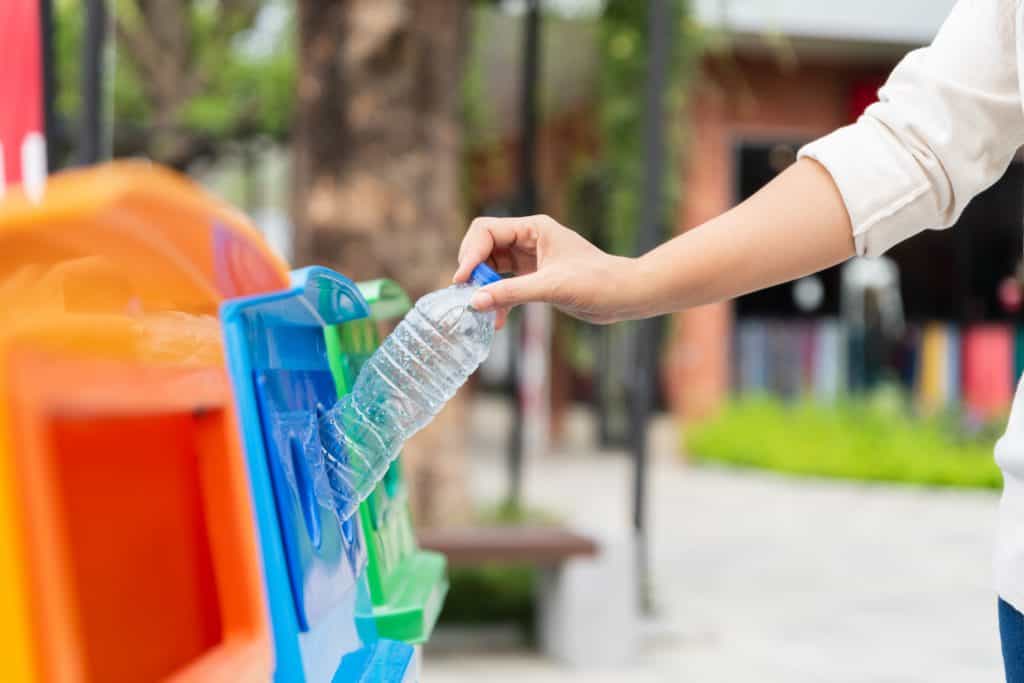Zero plastics to landfill
Maximising waste as a resource is key to driving resource efficiency and accelerating towards circularity. At the end of their service life, plastics contain resources that are too valuable to be thrown away. They can be recycled back into new products or chemical raw materials or, where this is not yet possible or sustainable, be used for energy recovery as a substitute for virgin fossil fuels until more sustainable advanced recycling technologies become available.
Thanks to increasing landfill restrictions put in place by European member states and continuous efforts by the whole value chain to invest in the necessary infrastructure systems to recover plastic products at the end of their lives, the quantities of plastics waste sent to landfills has decreased by 44% between 2006 and 2018. This is the equivalent of 5.7 Mt of saved resources. However, more needs to be done to capture these valuable resources, as in 2018 more than 7.2 Mt of plastics waste (of which 3.3 Mt is plastic packaging) were still sent to landfill. This highlights the need for appropriate regulatory frameworks (further landfill restrictions, harmonised collection systems, instruments that encourage the use of recycled plastics), continued investment in innovation and the required sorting and recycling infrastructure.
Plastics recycling and recovery in Europe
In Europe, while nine member states, plus Norway and Switzerland, landfill less than 10% of their plastics waste, eight other member states still landfill more than 50%.
The latest annual monitoring of plastics waste, recycling and recovery performed on behalf of Plastics Europe and the European Association of Plastics Recycling and Recovery Organisations (EPRO) revealed the following key facts for EU-28 countries plus Norway and Switzerland, for the year 2018:
~29 million tonnes Collected post-consumer waste reached
75% Recovery reached
98% The recycling rate (32.5%) exceeded the landfill rate (24.9%)
42% and 81.5% Plastics packaging has the highest recycling and total recovery rates at respectively 42% and 81.5%
Together with our partners, we are committed to continuing the regular monitoring of this data to provide all stakeholders with reliable information on plastics waste and recycling and recovery rates.
Plastics Europe’s contribution to the debate
Our long-term aim is to achieve zero plastics to landfill to enable an increased collection and sorting for recycling. Since the early 1990s, European plastics manufacturers have been committed and prepared to contribute to the enhancement of plastics waste management schemes.
To exploit the full potential of this precious resource, we call for:
a landfill ban of all recyclable and recoverable post-consumer waste by 2025.
the establishment of recovery-oriented collection schemes, particularly, harmonised separate collection of all packaging.
investments in modern collection & sorting infrastructure and all recycling technologies, including chemical recycling.
incorporation of all recycling technologies in existing national and EU targets, which, as of today, have been crafted from a mechanical recycling perspective.


We are pursuing our objective to achieve zero plastics to landfill through:
specific know-how and expertise compiled via studies and thorough evaluations of practices in high-performing member states.
an open dialogue with all relevant stakeholders.
quantitative analysis of the management of plastics waste generated in Europe and of the use of recycled plastics by European converters.
Supporting research to understand better those behavioural interventions that enhance citizen engagement with better recycling and share best practice
Further reading
Plastics – the Facts.
The Circular Economy for Plastics – A European Overview
PlasticsEurope’s position on Recycled Content for plastics packaging under the review of the Directive 94/62/EC on Packaging and Packaging Waste (PPWD) – September 2021